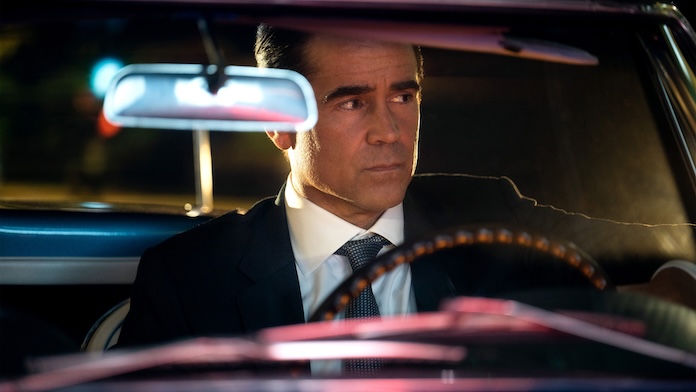
Colin Farrell as John Sugar
Director Fernando Meirelles on ‘Sugar’
From One Crime Saga to Another
Apr 10, 2024
Photography by Apple TV+
Web Exclusive
![]()
Sugar, AppleTV+’s new neo-noir series, is an exciting departure for Fernando Meirelles. After all, the Brazilian auteur made his name co-directing a very different crime saga, City of God. That film’s depiction of gang-addled Rio de Janeiro– shot in a jolting, in-your-face style with untrained, street-smart actors– was unflinching and unprecedented enough to earn Meirelles a cult following, critical acclaim and an Oscar nomination.
But with Sugar, he’s working with some of Hollywood’s biggest names, such as Colin Farrell (fresh off his own Oscar nod for Banshees of Inisherin), and veteran character actors Amy Ryan and James Cromwell, both featured in instantly memorable scene stealing turns. Farrell’s titular John Sugar roots the series in relatability and vulnerability, however, as he investigates a murder in modern L.A. with a saint-like kindness that defies the crusty private eye archetype.
Meirelles spoke to us over Zoom about binging film noir to prepare for the series, the easter eggs and homages awaiting fans of those classic films throughout all eight episodes, and how he embraced mistakes and challenged the fundamentals of filmmaking while working on Sugar.
Kyle Mullin (Under the Radar): What attracted you to this project?
Fernando Meirelles: It was Colin Farrell. I was supposed to shoot a big feature for six months, but that project collapsed. So I called my agent and said: “I’m ready to shoot! Find me something.” He came to me two weeks later with Sugar. I told him I knew nothing about film noir investigators. That’s not my world, Los Angeles crime.
But he suggested I talk to Colin, who was already attached, just to see what I thought. It was only supposed to be a 20-minute call, but we ended up speaking for an hour and a half, like we were best friends, right away. I admire the way he likes to create, and how he develops his characters. So I joined because I wanted to work with him.
But I was very honest with Mark Protosevich, the showrunner [screenwriter for The Cell and Thor]. I told him, of course, I’ve seen some film noir, but I don’t know much about this, so you have to teach me. And he sent me a very long email with all the films that I had to watch and why, and what I should look for in each one. Then I spent 20 days watching one of those films per day, like an intensive film noir festival for myself. That’s how I prepared.
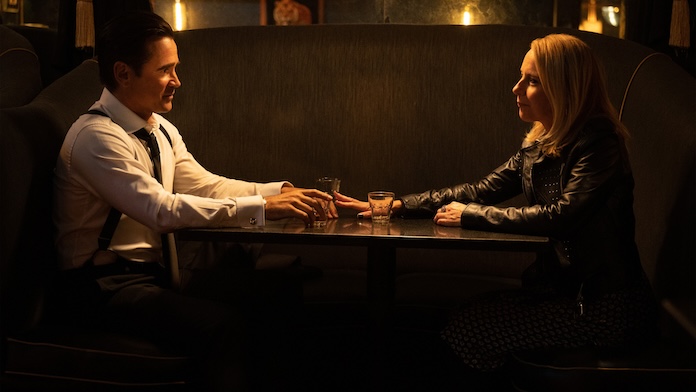
What did you enjoy about getting familiar with this genre?
I was trying to understand the characters. And I realized that Sugar is very different. Most noir detectives are very cynical. They don’t give a shit. And that’s the fun. Sugar is the opposite. He’s elegant. He cares about everybody.
Also, watching those films, I observed the way they frame things, and how they create suspense and pace. Then I realized the Sugar script is full of lines taken from all these films. And this is quite fun. Like one moment where Sugar is followed by a black van. Then he approaches and says: “Hey, you’re a terrible tail. I can spot you from a mile away.” When I watched The Big Sleep, there’s exactly the same scene. It was very fun to find that in Mark’s scripts. It’ll be an extra pleasure for fans of the genre to identify those moments.
On top of that, you cut to specific scenes from those classic film noirs at key moments in Sugar, like a hip-hop producer sampling a beat.
This was not in the script. I got the idea a bit before beginning in the cutting room. I decided with my editor that we would use those clips to show what is in Sugar’s mind. Because, for me, Sugar is like an anthropologist. We, in Brazil, studied tribes in the Amazon. Sugar would use films to understand the behavior of humankind. Showing the film clips would show what’s in his mind when he is doing specific actions.
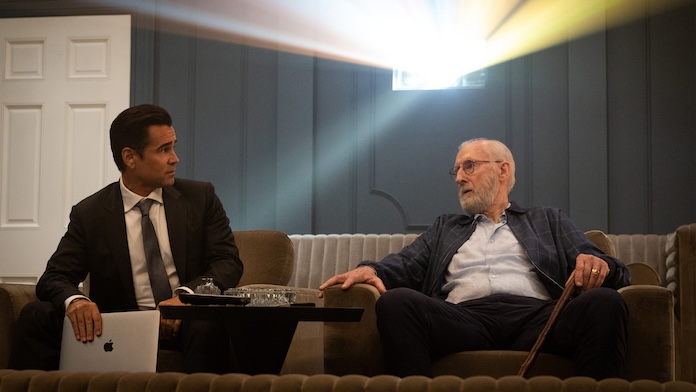
Based on what you said earlier, it sounds like Colin is as meticulous as his character. How exactly did he impress you during this project?
He’s very creative and he doesn’t try to control himself. He just lets go. I love how he likes to repeat the same scene. There are actors that will do one or two takes, then say “I’ve lost it, let’s move on.” But Colin will do it again and again, and each time come at it in a different way. In one take he’ll shout his lines, or in another whisper. And I like to keep the scene rolling, and not break the momentum. So he would roll the whole thing, then in the end say, “Don’t cut!” Then go back and say, “Action” as if to himself, then play the scene a different way. And I’d be watching from the monitor, asking myself “What’s going to be the surprise now?” As a director, it’s a pleasure to be entertained like that. Then in the cutting room, we could shape all of this great material he gave us.
I really want to work with him again. It was such a great process. I learned so much.
What are the benefits of this continuous shooting process?
I don’t break the scenes. That’s why when you watch it, sometimes the continuity will be wrong. It jumps. Because I set up three cameras and have the actors play the whole scene like a theater play. Then I’ll just zoom in or zoom out, or change the positions of cameras on the fourth or fifth take. Sometimes I’ll need specific coverage for a certain line of dialogue, but mostly I’ll just run the whole scene. The actors love it because they’re really involved. When you’re acting, you’re warmed up. If the director doesn’t cut, you can just go back and have the energy to perform the scene again. But once you say “cut,” the makeup artist comes, and the guy with the light needs to change something. You’ll stop for six, seven minutes, and you cool down and lose the moment.
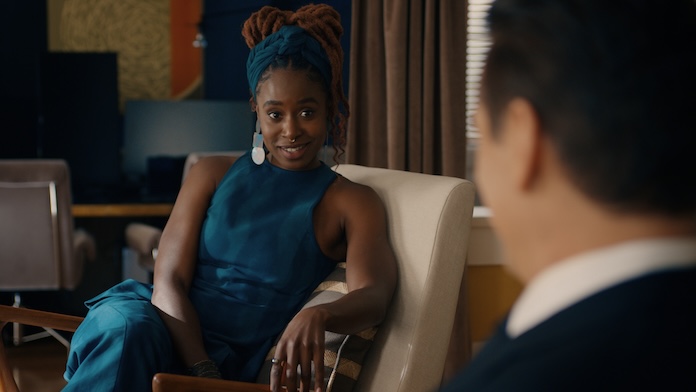
Did you develop this method recently? Or is it something you’ve done since City of God?
I had to do this on City of God because I wasn’t using trained actors. I couldn’t give them positions, or they’d just be thinking about that. So we just found a way to shoot, to let them be free to do whatever they wanted. And I worked with César Charlone, the same DP [director of photography] from City of God on Sugar. And the great thing is that he has no stands, no lights. The set is like an ordinary room. I can shoot the actor 360 degrees. If we had stands and equipment on City of God, it would have distracted the actors or been obstacles for them. Ever since then, I’ve been shooting like this.
So I had this process developed. But on Sugar, I also did something that was new for me. I put cameras over the shoulders of each actor, and didn’t maintain continuity or consistent eyelines between characters, which is one of the first things they teach you not to do in film school. You’ll be watching, and something will seem off from one scene to the next. Also, the way I shoot is very fast, so I’ll have time to, let’s say, do one scene with characters standing up, then do it again with them seated. Then I’ll cut from one to the other in the middle of a line of dialogue. So there’s a lot of discontinuity in the cut. But I think it brings a unique energy to the scenes.
Are there added benefits to that disconnect, maybe on a thematic level?
Well, we have many scenes in this series that have pages of dialogue in a row. By playing with the continuity, it can give more rhythm to what might be a dragging dialogue scene.
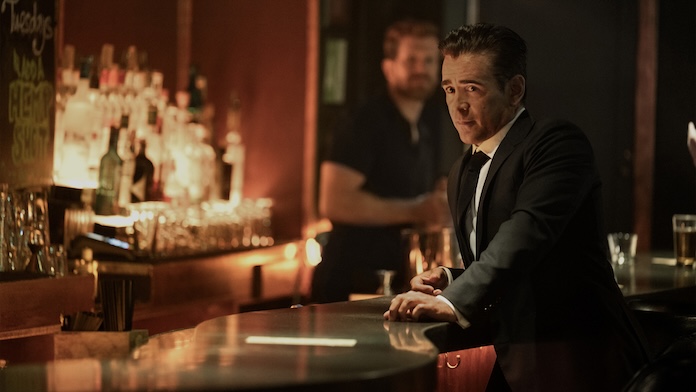
My favorite scene in Sugar is shot very slowly– one that focuses on Sugar taking his favorite antique car, a bright blue convertible, for a spin, each frame lovingly laconic.
Yes, but that car [1963 Corvette convertible] is just so beautiful, isn’t it? We were all amazed when it was brought on set. And Colin wanted to buy it! By shooting it in careful detail, I wanted to reveal the car as if it were a character in the story. Which it is, right? The reveal should be big, because in a way the series is Sugar and that big blue car.
Sugar airs weekly on Apple TV+ every Friday with the first two episodes premiering on April 5 2024.
Current Issue

Issue #72
Apr 19, 2024 Issue #72 - The ‘90s Issue with The Cardigans and Thurston Moore
Most Recent
- Maggie Rogers @ House Of Blues, Chicago, US, April 19, 2024 (Review) —
- 10 Best Songs of the Week: Nilüfer Yanya, Linn Koch-Emmery, Fat Dog, Crumb, St. Vincent, and More (News) —
- Fat Dog Announce New Album and Tour, Share Video for New Song “Running” (News) —
- The Obsessed, Howling Giant @ Brooklyn Meadows, NYC, April 12, 2024 (Review) —
- Premiere: Slow Joy Releases New Single and Video for “King Cowboy” (News) —

Comments
Submit your comment
Commenting is not available in this channel entry.There are no comments for this entry yet.